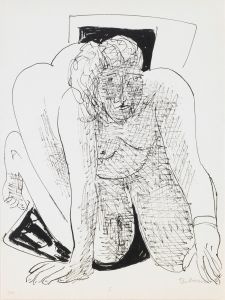
Old Gable
A hand-painted replica of Egon Schiele’s masterpiece Old Gable, meticulously crafted by professional artists to capture the true essence of the original. Each piece is created with museum-quality canvas and rare mineral pigments, carefully painted by experienced artists with delicate brushstrokes and rich, layered colors to perfectly recreate the texture of the original artwork. Unlike machine-printed reproductions, this hand-painted version brings the painting to life, infused with the artist’s emotions and skill in every stroke. Whether for personal collection or home decoration, it instantly elevates the artistic atmosphere of any space.
Egon Schiele, an Austrian painter known for his distinctive style and contribution to early 20th-century art, created the painting "Old Gable" in 1917. Schiele was a protégé of Gustav Klimt and a major figurative painter of the early 20th century. His work is noted for its intensity and raw sexuality, and the many self-portraits the artist produced, including nude self-portraits. Schiele's work is often associated with the Expressionist movement, which sought to convey emotional experience rather than physical reality.
"Old Gable" is one of Schiele's architectural paintings, a subject he explored alongside his more famous figurative works. This painting reflects Schiele's interest in capturing the essence and character of buildings, a theme that runs through several of his works. The painting depicts a gabled roof, a common architectural feature in the regions of Austria and Central Europe, where Schiele spent much of his life.
Schiele's architectural works often focus on the interplay of light and shadow, and "Old Gable" is no exception. The painting captures the stark contrast between the bright surfaces of the building and the deep shadows cast by its architectural features. This use of light and shadow not only highlights the structure's form but also imbues it with a sense of drama and moodiness, characteristic of Schiele's style.
The painting's composition is marked by Schiele's typical use of bold lines and exaggerated forms. The gable is rendered with sharp angles and a slightly distorted perspective, lending the work a dynamic and somewhat unsettling quality. This approach reflects Schiele's broader artistic aim to express the underlying emotional and psychological dimensions of his subjects, whether human or architectural.
"Old Gable" was created during a tumultuous period in Schiele's life. By 1917, Europe was in the throes of World War I, and Schiele himself was conscripted into the Austrian army. Despite the challenges of wartime, Schiele continued to produce art, and this period saw some of his most mature and refined works. The painting can be seen as part of Schiele's exploration of themes of decay and renewal, as the old gable might symbolize the passage of time and the endurance of structures amidst changing circumstances.
Egon Schiele's work, including "Old Gable," has been celebrated for its innovative approach and emotional depth. His architectural paintings, while less well-known than his portraits and figure studies, offer valuable insight into his artistic vision and the cultural context of early 20th-century Austria. Schiele's ability to convey the essence of his subjects with economy and power has secured his place as a pivotal figure in the history of modern art.
Today, Schiele's works are held in high regard and are featured in major art collections around the world. "Old Gable," like many of his paintings, continues to be studied and admired for its unique style and the insight it provides into the artist's world.





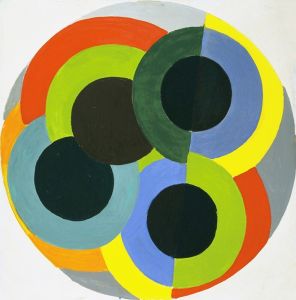
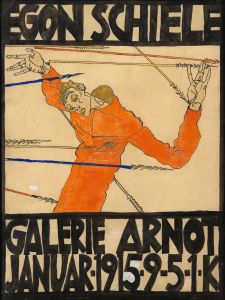
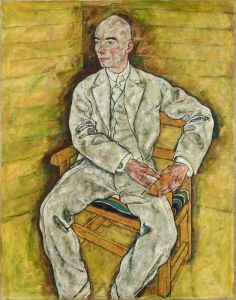
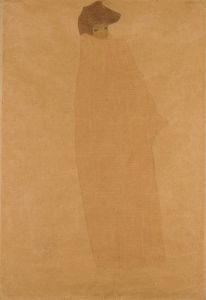
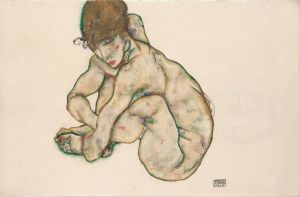
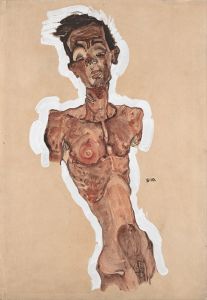
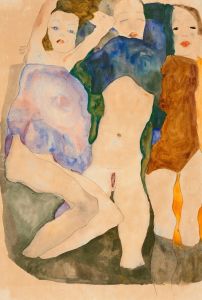
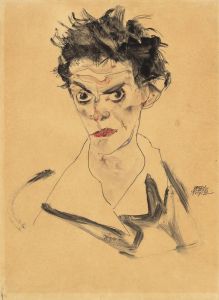
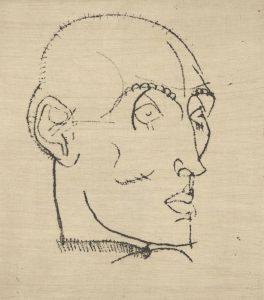
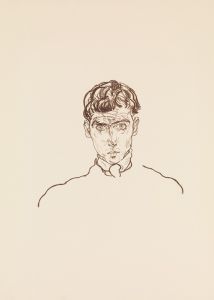
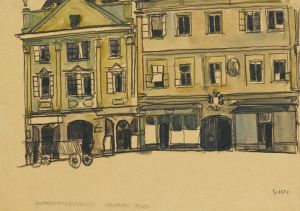
![Designs for theater with black-framed proscenium and boldly colored settings.] [Study for stage light wall decoration, possibly for Caf ̌Crillon …](/imgs/249422/s/winold-reiss-designs-for-theater-with-blackframed-proscenium-and-boldly-colored-settings-study-for-stage-light-wall-decoration-possibly-for-caf-crillon--887bf6b8.jpg)

